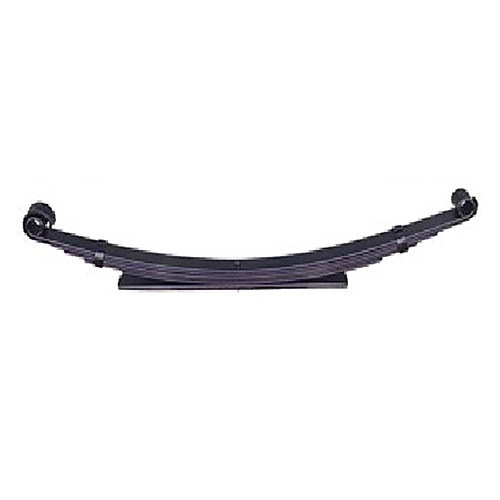Key Aspects of Carriage Springs
2024-06-12
A carriage spring, commonly referred to as a leaf spring, is a crucial component used in the suspension systems of vehicles, particularly in older models such as carriages and modern-day trucks, vans, and SUVs. Leaf springs are designed to support the vehicle's weight, absorb shocks, and maintain tire contact with the road.
Key Aspects of Carriage (Leaf) Springs
Types of Leaf Springs
1. Mono-Leaf Springs:
- Description: Consist of a single, flat steel plate.
- Use: Primarily used in lightweight vehicles or the front suspension of cars.
- Advantages: Simple design, lighter weight.
- Disadvantages: Limited load-carrying capacity and stiffness.
2. Multi-Leaf Springs:
- Description: Made up of multiple layers of metal (leaves) of varying lengths stacked on top of each other.
- Use: Common in heavy-duty vehicles like trucks and buses.
- Advantages: Greater load-carrying capacity and durability.
- Disadvantages: Heavier and more complex than mono-leaf springs.
Structure and Components
- Leaves: Multiple layers of steel plates, with the longest leaf called the "main leaf" or "master leaf."
- Center Bolt: Holds the leaves together at the center.
- Clamps: Prevent the leaves from spreading out.
- Spring Eyes: The ends of the main leaf are usually formed into circular shapes to attach to the vehicle frame.
- Bushings: Placed in the spring eyes to reduce friction and wear.
- Rebound Clips: Maintain alignment of the leaves during compression and rebound.
Working Principle
- Load Distribution: When the vehicle encounters a bump, the leaf spring flexes to absorb the impact, distributing the load across its length.
- Shock Absorption: The flexing action of the leaves absorbs and dissipates the energy from road shocks, providing a smoother ride.
- Alignment Maintenance: Helps maintain the vehicle's alignment by keeping the axle in place relative to the vehicle frame.
Materials
- Steel Alloys: Traditionally made from high-carbon steel or alloy steel for strength and flexibility.
- Composite Materials: Modern leaf springs may use composite materials (such as fiberglass) for reduced weight and increased corrosion resistance.
Applications
- Automotive: Widely used in the suspension systems of trucks, vans, SUVs, and some passenger cars.
- Agricultural Machinery: Used in tractors and other heavy-duty agricultural equipment.
- Railroad Cars: Provide suspension and shock absorption in rail vehicles.
- Vintage Vehicles: Common in older vehicles and carriages, maintaining historical accuracy in restorations.
Advantages
- Durability: Highly durable and capable of withstanding heavy loads.
- Simplicity: Simple design with fewer moving parts compared to other suspension types.
- Cost-Effective: Relatively inexpensive to manufacture and maintain.
- Load Handling: Effective at distributing loads over a wide area.
Disadvantages
- Weight: Heavier compared to other types of suspension systems.
- Ride Comfort: May provide a stiffer ride compared to coil springs or air suspensions.
- Maintenance: Requires regular inspection for wear and tear, especially in heavy-duty applications.
Maintenance and Care
- Regular Inspection: Check for cracks, corrosion, and wear, especially in multi-leaf springs.
- Lubrication: Periodically lubricate the leaves to reduce friction and noise.
- Replacement: Replace worn or damaged springs promptly to maintain vehicle safety and performance.
Conclusion
Carriage or leaf springs are integral components in vehicle suspension systems, offering durability and effective load management. Despite advancements in suspension technology, they remain widely used in heavy-duty applications due to their robustness and simplicity. Proper maintenance ensures their longevity and optimal performance.



